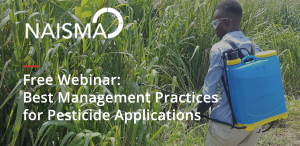Up Your Pesticide Application Game

Every Wisconsin landowner faces problems with invasive species on their property. Many simply ignore the situation. They are ignorant of the situation on their land; oblivious to the problems they face all together. Some realize that invasive plants are changing their land but believe that they are “letting nature take its course.” Others have hate or fear pesticides in any form. They refuse to entertain their use in any way whatsoever.
Making Change
If you see yourself in any of these groups, active land stewardship can dramatically change how you manage you land. First, instead of woodlands with a solid green wall of shrubs, you can begin to work toward open woodlands. Second, solid cattail marshes that support only redwing blackbirds and be replaced by diverse wetlands that are wildlife magnets. Third, you can begin to transform weed fields surrendering to shrubs into prairies and savannas alive with with insects, birds and wildflowers. Herbicides are an important tool, but only one tool in you toolbox for transforming your land.
Many of us grew up with pesticides in our garages and under our kitchen sinks. Our degree of comfort using these products has a lot more to do with how our parents handled this products. The attitudes our parents passed to us may or may not reflect the risks those chemicals pose to people, wildlife or the environment.
I spent years helping landowners restore their property to improve wildlife habitat and increase biologic diversity. My view on pesticide use was shaped by my land stewardship ethic. Herbicides are an important tool for managing invasive species and preparing degraded land for restoration. An integrated pest management (IPM) combines herbicides with mowing, prescribed fire and grazing to best achieve the landowner’s vision and goals for their property. Because of ethical herbicide use, you can minimize the quantity of chemical used and target it tightly to prevent damage to surrounding plants.
The concept of best practices combines using the most effective management methods with the best science. Best practices provide the most ethical, economical and practical solutions for the land. As a result of using pesticide best practices, you safely get the best results with the least amount of risk.
Free Training at Your Desk
The North American Invasive Species Association (NAISMA) is hosting a free webinar on July 21, 2021 at 1:00pm (CDT) that presents Best Management Practices for Pesticide Application. NAISMA is not simply a bunch of nozzleheads working for the agrochemical industry. These ecological restoration professionals manage both public and private lands with the aim of applying the best science available to land stewardship.
The webinar will “walk-through” a number of key label statements. Sandra McDonald, who has several decades of experience as an educator in weed management, is the presenter. Her presentation focuses on practical topics for landowners and land managers. These iuncude the importance of assuring the site is allowed on the label and environmental hazard statements. Next, she will cover mixing compatibility and jar tests. Finally, you will learn sprayer clean-up procedures. If some of these topics are unfamiliar, this webinar is an hour that will up your game. It is likely to change the way you buy and use herbicides.
